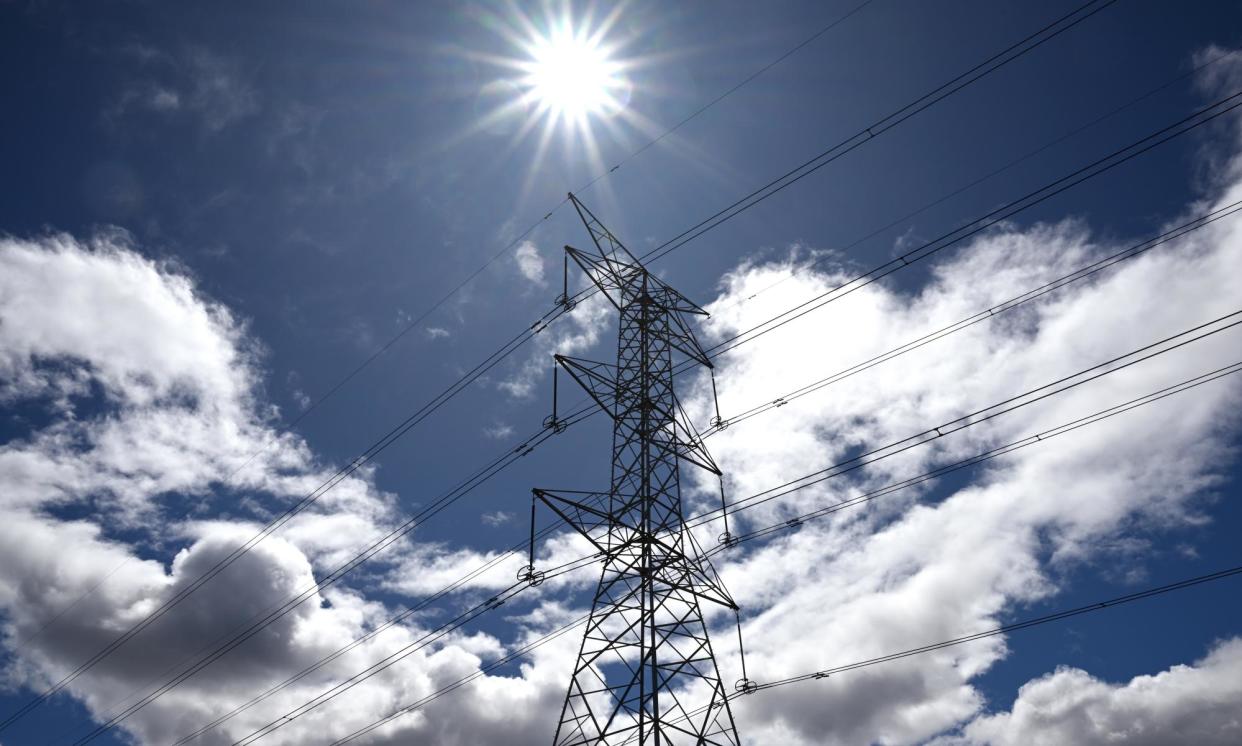Australia’s electricity grid to remain reliable if renewable projects delivered ‘on time and in full’, Aemo says

Australia’s electricity authority has declared the country’s main power grid will remain reliable as it shifts from coal domination to running overwhelmingly on renewable energy – but only if investments in new generation are delivered “on time and in full”.
The Australian Energy Market Operator (Aemo) reached its conclusion in a report that considered what needs to be built over the next decade to maintain the National Electricity Market, which links the five eastern states and the ACT.
The chief executive of Aemo, Daniel Westerman, said it was critical expected investments in new solar, wind, batteries, pumped hydro and transmission links were delivered as proposed. Modelling suggested reliability gaps if projects were delayed.
“We know the investment’s there. It’s just got to get delivered in generation, in transmission, in storage,” he said.
Westerman said the grid reliability outlook had improved since last year, in part due to new “committed and anticipated” infrastructure: 5.7 gigawatts of large-scale generation and storage and 365 kilometres of transmission connections. The strengthened forecast was helped by a two-year extension in the scheduled life of the Eraring coal plant in New South Wales and the continuing rapid spread of rooftop solar panels.
Australia’s power grid is midway through a transformation from fossil fuels to renewable energy. Solar, wind and hydro now provide about 40% of electricity on the east coast, roughly double the proportion five years ago. The Albanese government says under Labor that will reach 82% by 2030.
The Coalition says it would limit investment in renewable energy and instead build publicly owned nuclear plants and expand the use of gas, an expensive fossil fuel. Nuclear is banned in Australia, and the CSIRO and other analysts say a plant could not be online before 2040. Aemo forecasts about 90% of the remaining coal-fired generation is likely to have closed by 2035.
After years of rapid expansion, the clean energy industry earlier this year warned there had been a sharp slowdown in investment in new large-scale renewable energy in 2023, with financial decisions on solar farms shrinking more than a third and no wind farms being supported. This contrasted with strong investment in rooftop solar and large and small batteries.
The government’s response was to announce an expanded underwriting program for large-scale projects. It aims to add 32GW of renewables and storage by 2030.
Westerman said there had been a near doubling in the amount of generation capacity approved last financial year – 12GW up from 6.9GW the year before. He said the country needed to install 6GW a year to meet the government’s 2030 target.
Related: Australian renewable sector recorded ‘alarming’ slowdown in 2023, energy body finds
Aemo’s Electricity Statement of Opportunities report stressed while there was surplus generation in the grid across most of the year, demand for power increased during summer’s extreme heat.
It said the reliable operation of existing coal, gas and renewable plants would be critical for the grid to supply households and businesses this summer. There had been an increasing number of unscheduled outages at ageing coal plants, but Westerman said this had reduced last financial year.
Aemo has put out a tender for off-market backup electricity reserves in Victoria, NSW and South Australia this summer to manage “potential low reserve conditions”. Westerman said that was most likely to come from demand management, which involves major energy users being paid to reduce electricity consumption at times of high demand.
Dylan McConnell, an energy systems researcher at the University of NSW, said the report’s central message was “if we build all of the things without delays everything’s fine”. But he said Aemo clearly had some concerns about the coming summer and reliability could be tight in the years ahead if everything was not built on schedule.


